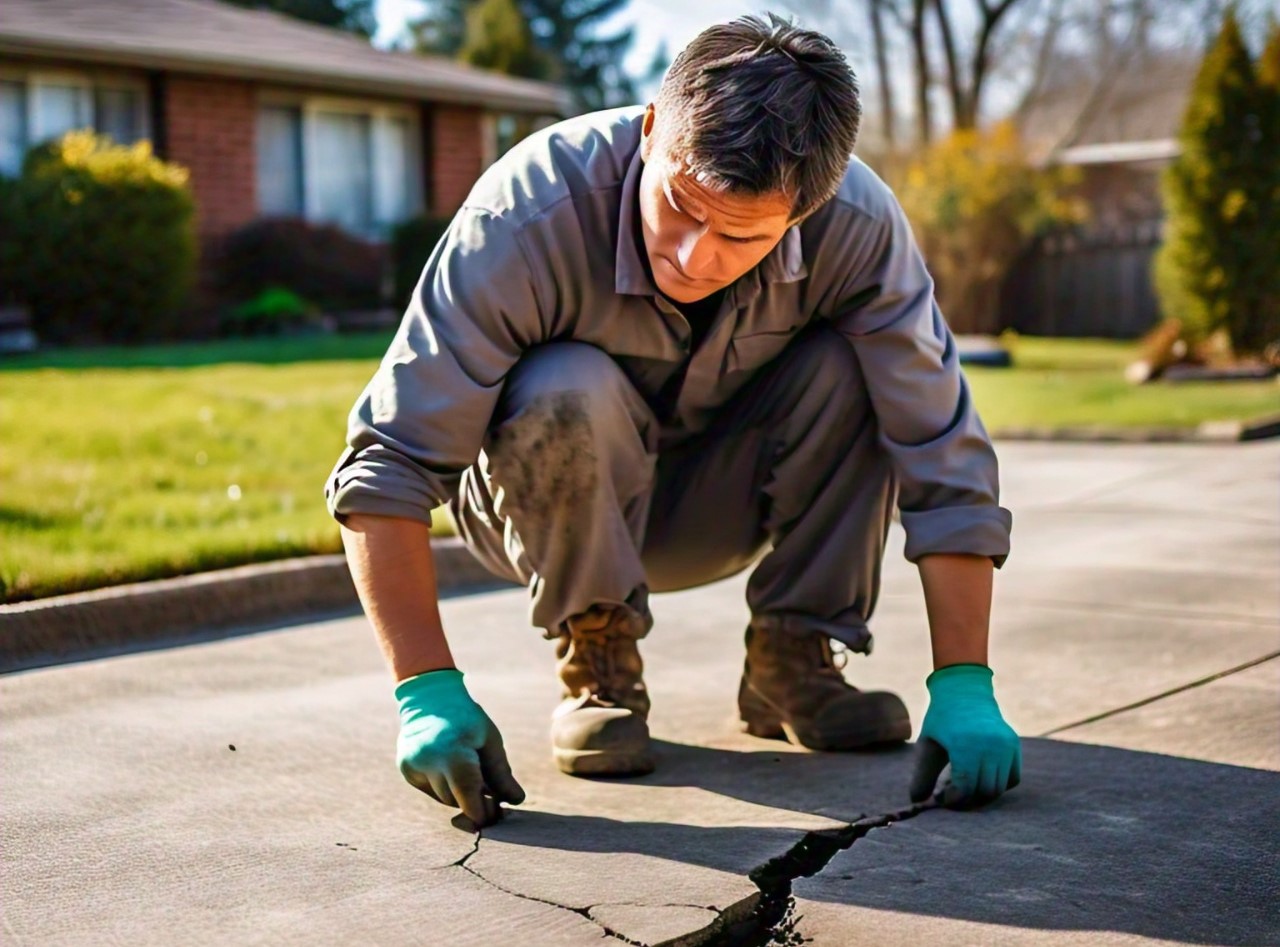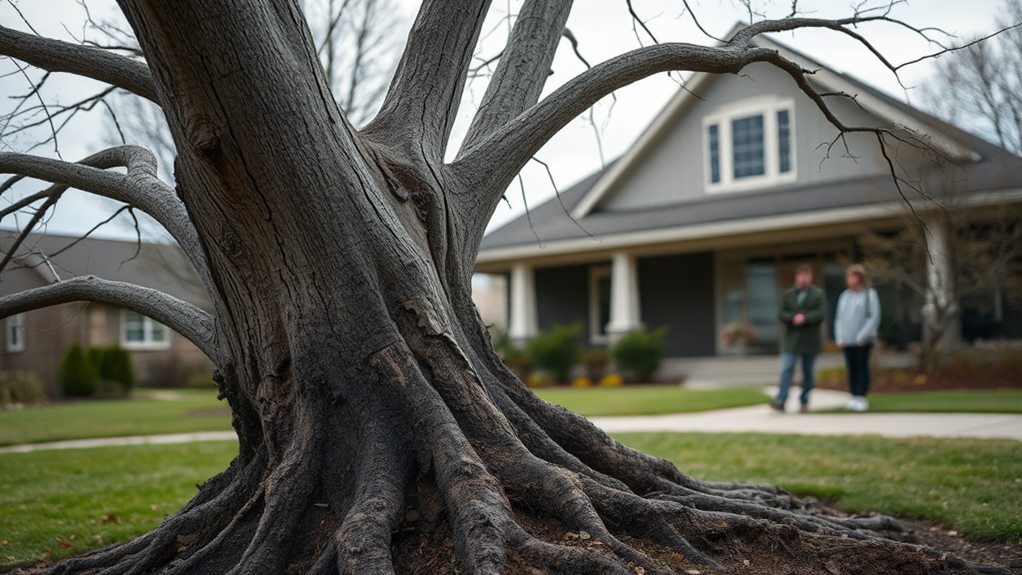How to Diagnose Concrete Driveway Cracks
You’re likely concerned about the cracks in your concrete driveway, and rightly so. Cosmetic cracks might be harmless, but wider ones can indicate underlying issues that need attention. Identifying the type of crack – hairline, linear, or spider cracks – helps understand the underlying problem. Soil settlement, shrinkage, weathering, and poor drainage can all contribute to cracking. Crucial to tackle these issues is to prevent water infiltration, weed growth, and safety hazards.
By understanding the causes and effects of cracks, you can take the necessary steps to repair and prevent future damage – and we’ll guide you through that process.
Understanding Cracks in Driveways
When you gaze out at your driveway, you might notice weeds sprouting up or anthill mounds forming, which can be telltale signs of cracks lurking beneath the surface.
These cracks can be a nuisance, causing tripping hazards and detracting from your driveway’s appearance. But did you know that not all cracks are created equal? Small, non-structural cracks are relatively harmless, but wider cracks can be a sign of underlying issues that need attention.
As a homeowner, it is vital to understand the difference between cosmetic cracks and those that require repair. Controlled joints in concrete driveways can help reduce cracking, but even with proper construction, cracks can still occur.
If you notice cracks with heaved edges, it is imperative to address them promptly to prevent further damage. By understanding the nature of cracks in your driveway, you’ll be better equipped to diagnose and address any issues that arise, ensuring your concrete driveway remains safe and functional for years to come.
Causes of Cracks in Concrete
Diagnosing cracks in your driveway requires understanding their underlying causes.
You’re not alone in dealing with cracks in your driveway, and identifying the root cause is vital to finding an effective solution.
Settlement cracks, for instance, can occur when the soil beneath your driveway settles or shifts, causing the concrete to crack.
- Soil Settlement: When the soil beneath your driveway settles or shifts, it can cause the concrete to crack. This is especially common in areas with clay soil or poor drainage.
- Shrinkage: As concrete cures, it naturally shrinks, which can cause small cracks to form. This type of crack is usually harmless but can still be unsightly.
- Weathering: Extreme weather conditions, such as freeze-thaw cycles, can cause concrete to expand and contract, leading to cracks. This is especially common in areas with harsh winters.
Identifying Types of Cracks
Now that you’ve identified the underlying causes of cracks in your driveway, it’s time to take a closer look at the cracks themselves.
Cracks are usually caused by a combination of factors, including shrinking concrete, soil settlement, and weathering.
When examining your driveway, you’ll likely notice different types of cracks, each with its own characteristics.
Hairline cracks, for instance, are thin and barely visible, often appearing as faint lines on the surface.
They can be a sign of minor settling or shrinkage, but can still be a precursor to more serious issues if left unchecked.
Other types of cracks may be more pronounced, such as linear cracks that run in a straight line or spider cracks that resemble a spider’s web.
These cracks can be caused by more significant structural issues, like soil instability or poor drainage.
By identifying the type of crack, you can better understand the underlying problem and take the necessary steps to address it.
Effects of Cracks on Driveways
How much damage can cracks in your driveway really do? You might think they’re just cosmetic issues, but the truth is, they can lead to serious problems down the line.
As water seeps into the cracks, it can cause erosion, undermining the structural integrity of your driveway. This, in turn, can lead to costly repairs or even full replacement.
Three ways cracks can cause damage to your driveway:
- Water Infiltration: Cracks form due to weathering, settlement, or other factors, allowing water to seep into the concrete. This can lead to freeze-thaw damage, causing the concrete to expand and contract, making the cracks worse.
- Weed Growth: As water accumulates in the cracks, weeds can start to grow, further destabilizing the concrete and making the cracks deeper.
- Safety Hazards: Cracks can create tripping hazards, especially for pedestrians, cyclists, or children playing in the area.
If left unchecked, these issues can lead to costly driveway crack repair or even complete replacement. It’s vital to address cracks as soon as possible to prevent further damage to your driveway.
Repairing Cracked Driveways
Since you’ve identified the cracks in your driveway, it’s time to take action and address them before they wreak havoc.
The first step in repairing cracked driveways is to determine the type and cause of the crack, as well as the severity of the damage. This will help you decide on the appropriate repair method.
For hairline cracks, a concrete crack filler or liquid sealant may be sufficient. However, larger cracks may require more extensive repairs, such as grinding and filling.
If the cracks are over a half-inch wide, it’s best to consult a concrete professional to guarantee safety and prevent further damage. In some cases, damaged areas may need to be cut out and replaced, or the entire driveway may need to be replaced if the damage is extensive.
Preventing Future Cracks
To prevent future cracks from forming in your driveway, you need to take proactive measures during the installation process.
Crucial to getting it right from the start is avoiding the frustration and concern that come with dealing with cracks.
When preventing future cracks, key steps to take:
- Use a good quality concrete mix: A mix with shrinkage-compensating cements can help minimize cracking in your driveway. This type of mix is specifically designed to reduce shrinkage cracks.
- Ensure proper compaction and vibration: Make sure the concrete is fully compacted and vibrated to eliminate air pockets and increase its strength. This will reduce the likelihood of cracking.
- Wet the soil prior to the pour: Avoid excessive water loss from the base of the concrete by wetting the soil before the pour. This can help prevent shrinkage cracks from forming.
Concrete Driveway Maintenance
Your newly poured driveway is a significant investment, and proper maintenance is crucial to extending its lifespan.
By taking proactive steps, you can prevent driveway cracks from forming and reduce the need for costly concrete crack repair. Regularly cleaning your concrete driveway is essential, as dirt and debris can hide small cracks, allowing them to grow and spread.
You should also seal your driveway every two to three years to protect it from the elements. Additionally, keep an eye out for signs of wear, such as fading or discoloration, and address them promptly.
By staying on top of maintenance, you can identify and address small issues before they become major problems. This will help you avoid the frustration and expense of dealing with extensive driveway cracks and repairs.
With regular upkeep, your concrete driveway can remain safe, functional, and visually appealing for years to come.
Frequently Asked Questions
What Is an Acceptable Crack in a Concrete Driveway?
When evaluating cracks, you’ll find an acceptable one is typically narrow, about 1/8 inch in width, and shallow, with a depth less than 1/4 inch, and a random, hairline pattern that doesn’t indicate structural issues.
How Do You Know if a Concrete Crack Is Serious?
You know a crack is serious if it’s over 1/4 inch wide, indicating severe settlement or structural integrity issues, or if it’s deep, uneven, or has heaved edges, which can compromise the driveway’s overall stability.
When Should I Be Concerned About Cracks in My Driveway?
You should be concerned about cracks in your driveway when you notice uneven settlement, extreme weather patterns, or freeze-thaw cycles causing widening cracks, as these can lead to further damage, safety hazards, and costly repairs down the line.
How to Detect Cracks in Concrete?
You inspect surfaces carefully, looking for crack patterns, like spider webs or straight lines, which can indicate underlying issues. Understanding crack formation helps you identify potential problems, and learning crack prevention strategies can save you from costly repairs down the line.
Wrapping things up
Now that you’ve diagnosed the cracks in your concrete driveway, it’s time to take action. Don’t let those cracks compromise your driveway’s integrity or your family’s safety. By understanding the causes, identifying the types, and addressing the effects, you can repair and prevent future cracks. With regular maintenance, your driveway can look like new again. Remember, a well-maintained driveway is not only visually appealing but also safer and more durable.

